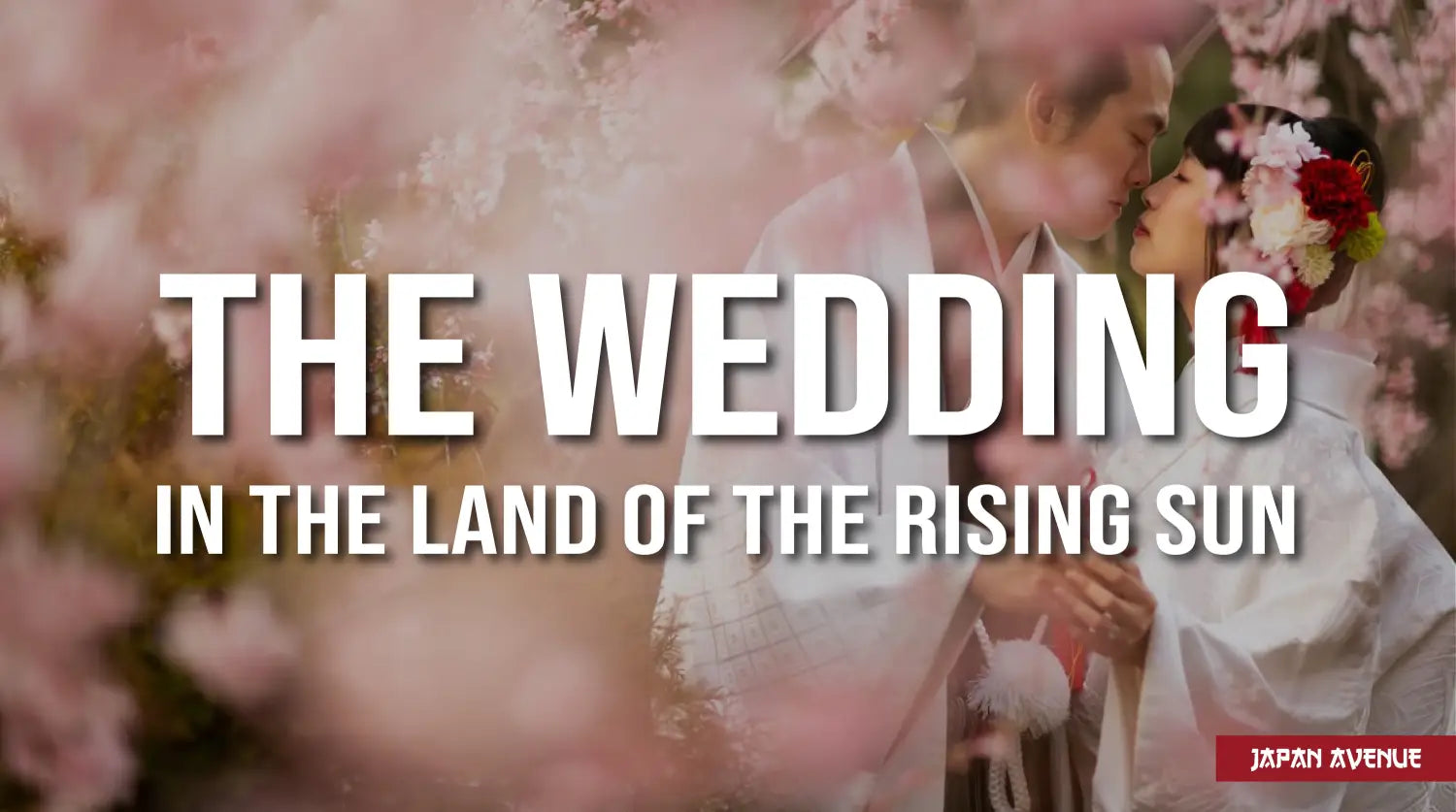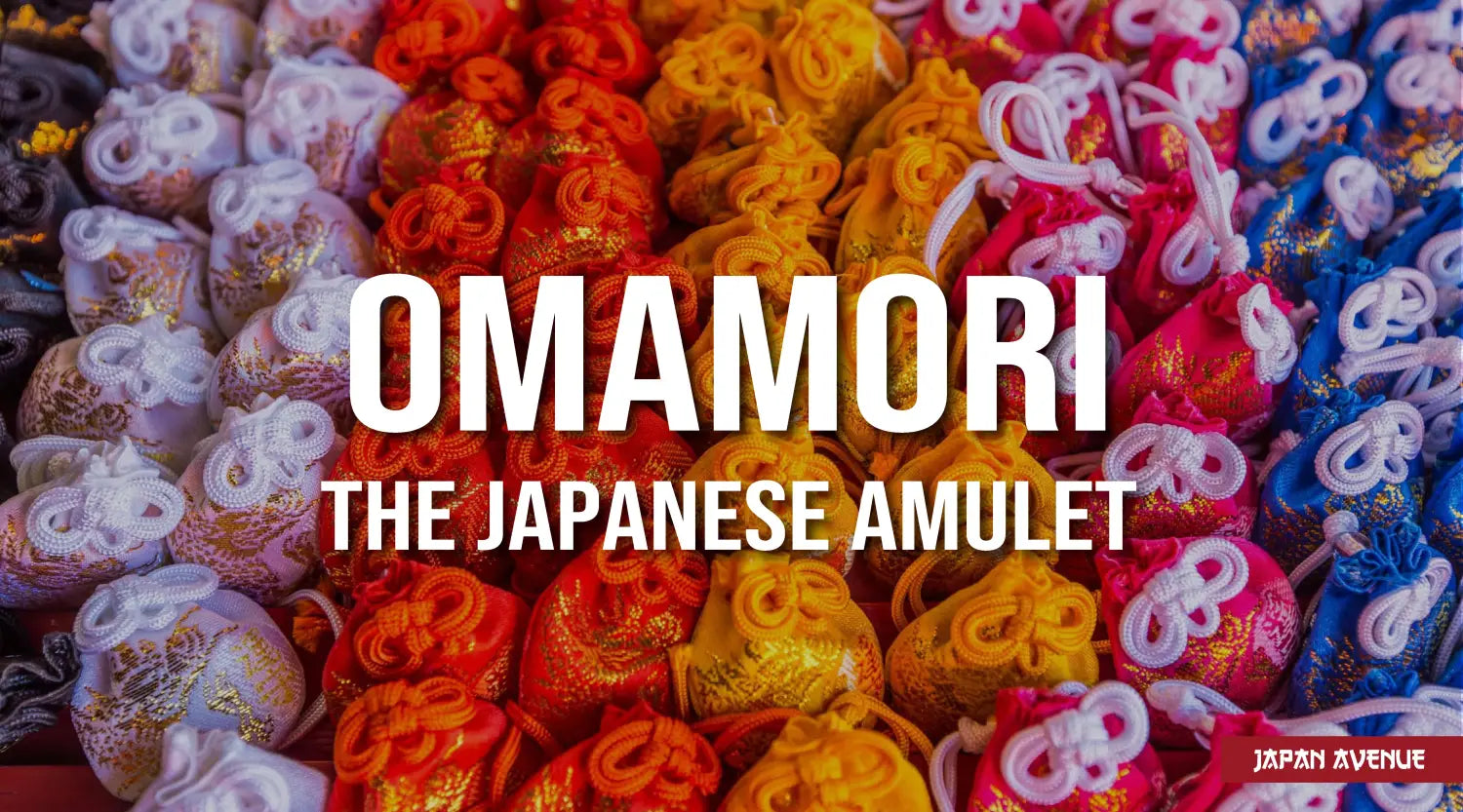Fall goes hand in hand with the wedding season in the Land of the Rising Sun. Between respect of traditions and modernity, the Japanese wedding is a large-scale event.
Traditionally, the wedding in Japan is held according to a Shinto ceremony, marked by many rituals. A Shinto wedding is called a Shinzen kekkon (神前結婚) in Japanese and literally means "wedding in front of the deities.
According to the tradition, the bride and groom as well as their guests are dressed in kimonos, drink sake and hold sakaki branches before gathering around a gigantic banquet.
Learn more about Japanese wedding customs, the ceremony and bridal traditions in the Land of the Rising Sun.
💘 The wedding in Japan, between custom and tradition
Traditional marriage is a custom that dates back a thousand years. The number of marriages nowadays has almost halved from an estimated one million in 1970. This is because young Japanese people are not very confident about the economic future and prefer to focus on their professional careers. Also, like in the rest of the world, the average age at first marriage is getting increasingly higher. In 2019, the average age of marriage is estimated at 31 for men and 29 for women. Meanwhile, the divorce rate is decreasing after peaking at 290,000 in 2002. It should be noted that in Japanese culture, being single after the age of 30 is frowned upon. A real social pressure for people in their thirties.

Photo credits: Marisol Benitez
Originally, the marriage in Japan played a social and cultural role. The omiai or "arranged marriage" preserved the honor of families, developed political alliances and offered the guarantee of a secure future. This practice originated from the samurai and was widely practiced until the 1960's. Today, it has almost completely disappeared, giving way to a love marriage. Moreover, the romantic and modern appeal of Western-style weddings is booming in Japan. Nevertheless, traditions are still very much alive in the archipelago and the traditional Shinto wedding is not about to disappear.
✅ The stages before the wedding
To celebrate a traditional Shinto wedding, the future spouses must go through the engagement process, which represents a legal obligation in Japan, in addition to a moral commitment.
💍 The engagement: a legal value in Japan
The traditional engagement ceremony consists of a meal, organized by the families of the bride and groom according to favorable dates of the Buddhist calendar. For this purpose, the Chinese horoscope of the couple is to be consulted.
The engagement dinner is the first official meeting between the two families. The engaged couple receives symbolic gifts according to Japanese customs. A kimono belt (Obi) is given to the bride as a symbol of feminine qualities while the groom receives a pair of traditional pants (Hakama) as a symbol of his fidelity.

Other fetish objects are handed out 9 in number in order to bring good luck: a sake barrel, pennies for wine, a fan, an abalone, hemp, Konbu seaweed, cuttlefish, bonito and money.
💓 The civil wedding: the last stage before the Shinto ceremony
In order to celebrate the marriage, the couple first needs to formalize their union through a civil marriage. This is more of an administrative formality than a symbolic act. A simple document accompanied by the seals of the bride and groom is sufficient. The declaration must be registered at the town hall of the future place of residence of the spouses.
In Japan, the man must be at least 18 years old and the woman 16 years old to get married. Same-sex marriages are forbidden and the spouses are obliged to share the same family name.
🎎 Shinto wedding process in Japan

Entrance of the bride and groom and their families into the Shinto shrine. Photo credits: Yoav Aziz
Although Western-style weddings are in vogue in the Land of the Rising Sun, it is the Shinto wedding that embodies the traditional wedding in Japan. A very important event for families, requiring a particularly high budget. Like the engagement ceremony, the wedding date is chosen according to the most favorable dates of the Chinese calendar to ensure a promising union. This is why most Shinto weddings are held in fall and sometimes in spring.
The traditional wedding, formerly celebrated at the groom's home, takes place in a Shinto shrine with the presence of both families and close friends. A priest leads the ceremony, assisted by young women known as miko.
👘 Traditional outfit of the Japanese bride and groom

Traditional outfits for Japanese brides and grooms
The bride will be dressed, have her hair and makeup done, for long hours. She wears a long-sleeved white kimono called Shiromoku, an Obi and a long coat. Her hairstyle is made up of a bun, usually a wig, adorned with a large white headpiece. As for accessories, the bride holds a fan and a nice box containing a comb and a mirror.
Like a geisha, her face is covered with rice powder, her eyes underlined with a black line and her lips colored in red.
The traditional costume of the groom is somewhat simpler. It consists of a Hakama, a loose, pleated kind of pants and a dark colored Haori jacket.
😇 The religious ceremony

San-san-kudo ritual and pronouncement of vows.
The ceremony starts with purification rites for the couple, followed by prayers and the famous San-san-kudo ritual where the bride and groom exchange a cup of sake 3 times. Each cup represents the past, the present and the future.
Then, the wedding rings are exchanged with the pronouncement of the vows. Lastly, the time of offerings and traditional dances to honor the kamis (Japanese deities) takes place. Sakaki branches are handed to the bride and groom to unite them with the gods. They wave them following a precise ritual. To close the ceremony, both families share sake to symbolize their union.
🍸 The reception meal

The reception banquet is also very codified. Guests, more numerous than at the Shinto ceremony, give an envelope with money as a wedding gift: 30,000 Yen for a single person and 50,000 for a couple to help the newlyweds to cover the expenses of their wedding. Note that the amount must be an odd number to avoid bad luck for the couple. The envelope given to the bride and groom is embellished with an unbreakable knot symbolizing eternal love.
During the reception, the bride switches her outfit several times, she often wears an Uchikake followed by a colorful kimono and a western wedding dress. The wedding banquet is accompanied by speeches, video projections, performances and other entertainment to the delight of the guests. Then, a sake barrel will be opened according to the ritual of opening the mirror to celebrate the new life of the bride and groom.
On this evening, the family of the newly-wed has the tradition of paying a dowry to the bride's family. Nowadays, this money is often given to the bride and groom. After the meal, the photo session announces the end of the festivities. Courtesy being a major value in Japan, the bride and groom give a thank you speech and do not forget to spoil each guest with gifts.
💒 The Western style wedding, very popular in Japan

Western wedding in Kyoto, Japan. Photo credits: Kristin Wilson
At the cutting edge of romance and modernity, Western weddings attract many Japanese. So much so that it represents the majority of weddings these days.
A white wedding dress for the lady, a suit for the gentleman, the Kimono can stay in the wardrobe, because glamour is the order of the day. Although the Christian wedding is very popular in Japan, the religion only touches a tiny part of the population. In reality, this is not a problem as many hotels propose fake buildings and even fake priests to make the dream wedding possible.
Nowadays, Western weddings are very popular and there are many fake chapels that are used as ceremony places. However, the traditional wedding remains deeply rooted in the Japanese culture.



